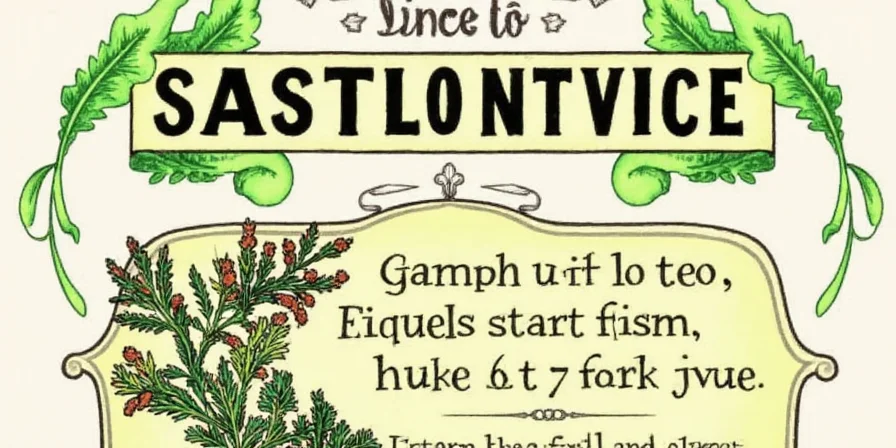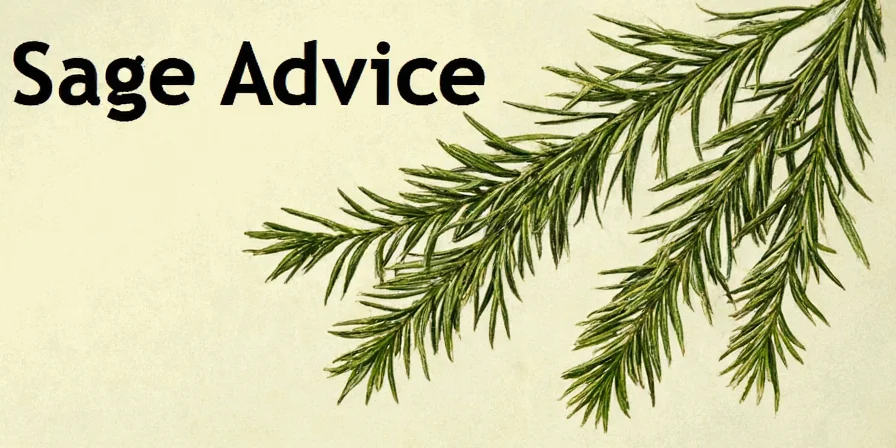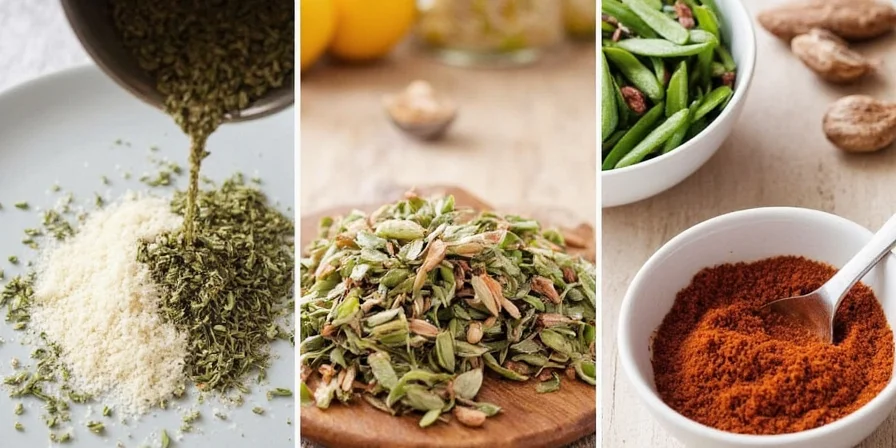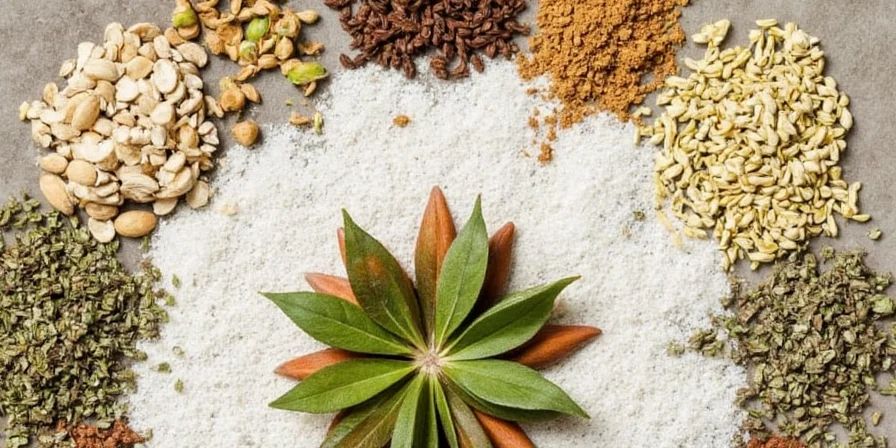Discover exactly how to use herbs and spices correctly with this practical guide. Learn which herbs pair with which foods, how to store them properly to maintain freshness, and avoid common mistakes that ruin dishes. This guide delivers actionable solutions for beginners looking to master basic herb and spice usage starting today.
Table of Contents
- Essential Herbs and Spices Every Beginner Needs
- Fresh vs. Dried: When to Use Each
- Proper Storage Methods That Actually Work
- Perfect Pairings for Common Ingredients
- Most Common Mistakes and How to Fix Them
- Simple Homemade Spice Blends Anyone Can Make
- Safety Tips You Need to Know
- Frequently Asked Questions
Essential Herbs and Spices Every Beginner Needs
Start with these 10 versatile basics that work in most recipes. You don't need a fully stocked cabinet to create delicious meals - these essentials cover 90% of cooking needs.

Must-Have Starter Kit
| Herb/Spice | Basic Uses | Substitute |
|---|---|---|
| Salt | Essential for all cooking | None - non-negotiable |
| Black Pepper | Meats, vegetables, eggs | White pepper (milder) |
| Garlic Powder | Sauces, marinades, rubs | Fresh garlic (3:1 ratio) |
| Sage | Stuffing, pork, squash | Thyme (similar earthiness) |
| Thyme | Roasts, stews, vegetables | Oregano (similar flavor) |
Fresh vs. Dried: When to Use Each
Use this simple rule: Add fresh herbs near the end of cooking and dried herbs at the beginning. Fresh herbs lose flavor with prolonged heat, while dried herbs need time to rehydrate and release flavors.
- Fresh herbs work best for: Garnishes, salads, finishing dishes, delicate sauces
- Dried herbs work best for: Soups, stews, braises, marinades, baked goods

Proper Storage Methods That Actually Work
Follow these specific methods to make your herbs last 2-3 times longer. Proper storage prevents waste and maintains flavor strength.
For Fresh Herbs
- Hardy herbs (rosemary, thyme, sage): Trim stems, place in water like flowers, cover loosely with plastic bag
- Tender herbs (cilantro, parsley, basil): Wrap in damp paper towel, store in airtight container
- Basil exception: Store at room temperature away from other produce
For Dried Herbs
- Store in airtight containers away from light, heat, and moisture
- Keep in a cool, dark pantry (not above your stove)
- Replace every 1-2 years for best flavor (test by rubbing between fingers)

Perfect Pairings for Common Ingredients
Stop guessing which herbs work with what foods. These proven combinations deliver restaurant-quality results every time.
| Food | Best Herb Pairings | Quick Tip |
|---|---|---|
| Chicken | Thyme, rosemary, sage | Add herbs under skin for maximum flavor |
| Fish | Dill, parsley, tarragon | Add fresh herbs in last 5 minutes of cooking |
| Beef | Rosemary, thyme, garlic | Crush dried herbs in palm before adding |
| Pork | Sage, thyme, rosemary | Sage cuts through richness of pork perfectly |
| Squash | Sage, nutmeg, cinnamon | Use dried sage for roasted squash dishes |

Most Common Mistakes and How to Fix Them
These simple errors ruin otherwise good dishes. Avoid them with these practical solutions:
- Mistake: Adding dried herbs too late – Dried herbs need time to rehydrate; add at the beginning of cooking
- Mistake: Using too much dried herb – Remember the 1:3 ratio (1 tsp dried = 1 tbsp fresh)
- Mistake: Storing spices above the stove – Heat and moisture degrade quality quickly
- Mistake: Not toasting whole spices – Toast seeds 30 seconds in dry pan to boost flavor 200%
- Mistake: Using old spices – Dried herbs lose potency after 1-2 years; test aroma before using
Simple Homemade Spice Blends Anyone Can Make
Create professional-quality seasoning blends with just your basic starter kit. These recipes use what you already have:
All-Purpose Herb Blend
- 2 tbsp dried thyme
- 2 tbsp dried rosemary (crushed)
- 1 tbsp dried sage
- 1 tbsp garlic powder
- 1 tsp black pepper
Store in airtight container for up to 6 months. Use on roasted vegetables, chicken, or potatoes. Mix 1 tsp per pound of meat before cooking.

Safety Tips You Need to Know
Follow these important guidelines to avoid problems:
- Storage safety: Keep spices away from heat sources to prevent fire risk
- Allergies: 2% of people have mint-family allergies (includes sage, rosemary)
- Burning point: Toast spices below 350°F (177°C) to prevent bitter flavors
- Potency test: Rub between fingers - weak aroma means it's time to replace
Frequently Asked Questions
What's the most versatile herb for beginners?
Thyme is the most versatile beginner herb. It works with meats, vegetables, soups, and sauces. It's forgiving if you use too much and maintains flavor well whether fresh or dried.
How do I know when dried herbs have gone bad?
Dried herbs lose potency after 1-2 years. The best test: rub a small amount between your fingers. If you can't smell a strong aroma, it's time to replace them. They won't make you sick but won't add flavor to your dishes.
What's the difference between herbs and spices?
Herbs come from the leafy parts of plants (basil, thyme, sage), while spices come from other plant parts like seeds (cumin), roots (ginger), or bark (cinnamon). Herbs are usually milder; spices tend to be more potent.
Can I substitute dried herbs for fresh in recipes?
Yes, use a 1:3 ratio (1 tsp dried = 1 tbsp fresh). Add dried herbs early in cooking to allow time to rehydrate; add fresh herbs near the end to preserve flavor. Never substitute dried basil for fresh in pesto - it won't work.
Conclusion
Mastering basic herb and spice usage transforms ordinary cooking into consistently delicious meals. Start with these essential techniques: proper storage to maintain freshness, correct fresh-to-dried ratios, strategic pairings for common ingredients, and avoiding common mistakes. Focus on quality over quantity - a well-maintained small collection of basics outperforms a large cabinet of stale spices. Implement these practical methods today and notice immediate improvement in your cooking results.











 浙公网安备
33010002000092号
浙公网安备
33010002000092号 浙B2-20120091-4
浙B2-20120091-4